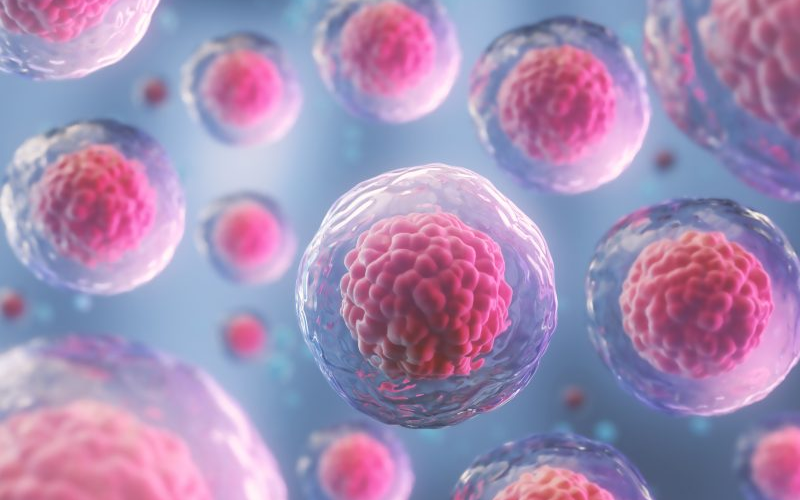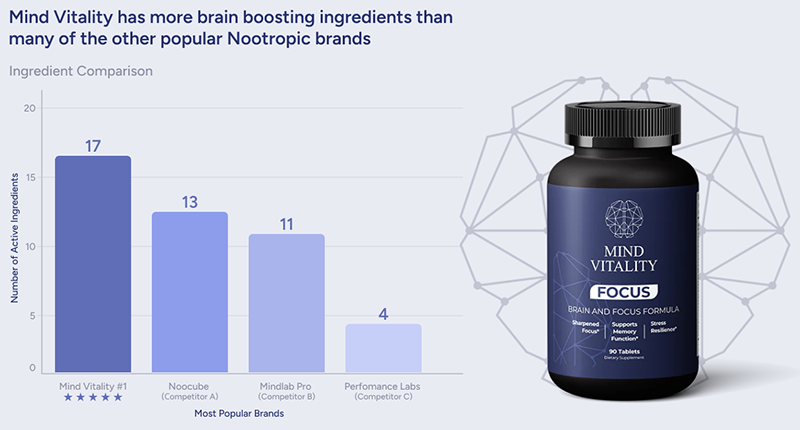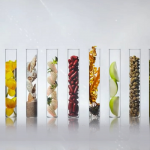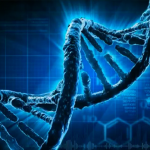People have long been concerned with aging, and the notion that there may be ways to slow down, or reverse, this natural human process. Because of this, we often go to great lengths to try to stall the aging process by experimenting with a host of remedies and therapies, from modifying our diets to undergoing medical procedures. For the last several years researchers have been looking into how stem cells might play a key role in how swiftly we age, and whether we have the means to increase or improve the quality of our stem cells.
Contents
What Are Stem Cells?
Stem cells can be considered the body’s raw materials — they are cells from which all other cells with specialized functions are created.
Stem Cells Generate New Cells
Under certain conditions in the body, stem cells divide to form additional, new cells. These daughter cells either become new stem cells themselves (self-renewal) or become specialized cells (differentiation) with a more specific function. Specific functions include brain cells, bone cells, blood cells or heart muscle cells. No other type of cell in the human body has this natural capability to produce new cell types.
Because of this ability of the stem cell to generate new cells of different, specific functions, stem cells act as an internal repair system. The body uses stem cells to replace old, damaged or dying cells. In some organs, such as bone marrow, stem cells routinely divide in order to repair and replace worn out or damaged tissues. In theory, your stem cells can divide without limit to replenish other types of cells for your entire lifetime.
From the above you can see that stem cells are different from other cells in three key ways. Stem cells:
- Can divide and renew themselves indefinitely
- Are unspecialized, so they themselves are not responsible for specific functions in the body
- Have the ability to generate new, specialized cells, such as blood, brain and muscle cells
Embryonic Stem Cells and Adult Stem Cells
Stem cells can be categorized as one of two main groups, embryonic and adult. Both these kinds of stem cells have the capability to self-renew and to differentiate into specialized types of cells, but they are different in other ways.
Embryonic stem cells develop during early fetal development — during the blastocyst stage (a stage in humans that lasts just five days from conception). Embryonic stem cells have a high differentiation potential — these cells can develop into just about any type of cell in the body. Embryonic stem cells used in research come from unused embryos that are the result of in vitro fertilization procedures and that are then donated to science.
Adult stem cells are present in the majority of organs and tissues in the human body. These adult stem cells are the source of new cells (through cellular division) throughout the life of a person, replacing cells that are lost to natural aging, damage or disease. An adult stem cell is committed to becoming a cell from their tissue of origin, and are unable to form as a different type of cell (which is why adult stem cells are also referred as tissue-specific stem cells).
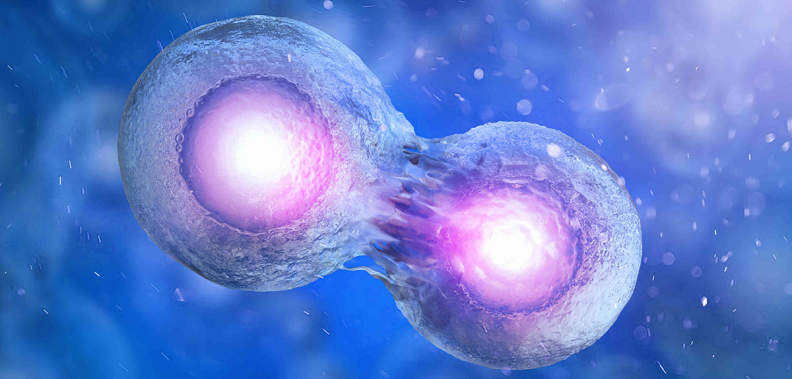
Stem Cell Replacement Therapy
As stem cell’s age, their functioning naturally deteriorates. Their regenerative powers potentiality diminish with age. This can be seen in the fact that injuries in older people tend to heal more slowly than injuries during childhood.
Doctors, researchers and scientists are enthusiastic about stem cells because treatments involving stem cells may be of help in several areas of health and medicine. Understanding the roles of stem cells may provide answers as to how serious conditions such as cancer and birth defects occur. Because of their unique regenerative capabilities, stem cells offer promise for treating diseases such as Parkinson’s, Alzheimer’s, and diabetes.
Physicians have a few methods for accessing, or harvesting stem cells for use in procedures for some specific and serious medical conditions. They include:
- Blood extraction by apheresis — a machine in blood banks that separates blood plasma and cells
- Fat cells that are obtained by liposuction
- Bone marrow stores, which can be obtained by biopsy (drilling into the bone to extract cells)
Stem cells in some instances have been used to aid in the repair of tissue. This is possible because stem cells have the potential to develop into such a range of cells. While adult stem cells can’t transform into any type of cell, an adult stem cell from one particular organ or tissue can transform into one of the several types of cells in that particular organ or tissue. An example of this is bone fractures that don’t heal properly, where stem cells from bone marrow can help in healing this type of orthopedic injury.
The known medical conditions that stem cell therapy can currently help is very limited — much more research and testing in this field needs to be done. Despite this fact, extensive claims far beyond what current medicine endorses are being made by some stem cell therapy treatment clinics. These excessive claims take advantage of the desperate and vulnerable. Stem cell treatments — often unproven and based on dubious research — can cost tens of thousands of dollars, and are seldom covered by insurance policies.
Boosting Stem Cells Naturally
Without healthy stem cells, our appearance and health suffer as we age. Because of the regeneration properties of stem cells, interest in stem cell health has become an important topic to those interested in anti-aging techniques.
Expensive, controversial and poorly regulated stem cell therapy adds new stem cells to the patient. It’s possible, however, for a person to increase their stem cells naturally. In fact, the human body is naturally, constantly creating new stem cells by the process of existing stem cells dividing. Healthy stem cells divide (create new stem cells) at a faster rate than less healthy stem cells.
Recent scientific studies (here and here) suggest that aging is connected with a reduction of the number and functioning of adult stem cells throughout the body. Researchers are concluding that protecting essential stem cells plays a critical role in slowing — and possibly partially reversing — aging.
Stem cells age and become less healthy. Less healthy stem cells divide less frequently, producing fewer new stem cells. So keeping stem cells healthy, and renewing already less healthy stem cells, has the effect of increasing the body’s stem cells. This is where supplements formulated specifically for stem cell health come in.
Stem Cell Nutrition
Rejuvenating stem cells may partially reverse tissue aging, and research suggests that this goal is within reach. A recently published study demonstrates that a variety of foods are capable of boosting stem cell function. While stem cell replacement therapy is expensive, unregulated, and uncertain in results, eating specific foods known to benefit stem cell health is inexpensive and easy to do.
It’s true that focusing on stem cell health through nutrition doesn’t directly add stem cells to the body, as stem cell replacement therapy does. But the end result can be similar in that healthier existing stem cells in the body become better at dividing and replicating, thus increasing stem cell count (as well as providing for more efficient and productive stem cells in general).
One large group of researchers has published extensively on their studies of nutrient combinations and stem cell health. Their work demonstrate that vitamin D, extracts from green tea and berries, the dipeptide (a combination of two amino acids) carnosine (present in meat muscle tissue) all promote an increase in healthy adult stem cells and protect those cells from the destructive effects of oxidative stress (an imbalance between free radicals and antioxidants in the body). These findings help to verify that natural means can be used to strengthen human stem cells.
Stem Cell Supplements
There are a number of stem cell supplements, also referred to as stem cell enhancers or stem cell activators, on the market. The goals of each is the same: to restore functionality to aging adult stem cells and to encourage the release of more stem cells from bone marrow so they can migrate to weak or aging tissue and organs in order to restore them to better health.
Listed next are some of the top natural substances demonstrated to promote the generation of new stem cells from existing healthy stem cells and trigger the release of stem cells from the bone marrow. Our best nutrients for stem cell health article discusses additional such nutrients.
Telomerase Activators
Stem cells cannot divide indefinitely; they have a built-in limit of replicating. Once a stem cell reaches its limit it ceases to divide and cannot replenish organs and tissues. This contributes to the aging process in that it eventually leads to organ failure, poor tissue healing, and loss of tissue function.
How many times a cell can split, or replicate, is governed by DNA repeats — protective cap-like structures called telomeres which protect against DNA mutations. As a cell continuously splits, this chain of telomeres gets shorter. When the chain of telomeres is too short, the stem cell stops splitting.
Stem cells combat telomere loss by producing telomerase, an enzyme that supplements stem cell telomere, effectively rewinding the molecular clock to increase the lifespan of a stem cell and its potential to replicate. Unfortunately, over time telomerase activity slows down, which in turn slows down production of telomere.
A study published in the journal Nature involved engineering mice to lack the telomerase enzyme. These mice become prematurely decrepit. However, they bounced back to health when the telomerase enzyme was replaced.
In short, increasing the enzyme telomerase increases the production of stem cell telomeres, increasing the productive life of a stem cell. For this reason you’ll find activators of the telomerase enzyme to be key ingredients in some stem cell supplements.
Polyphenols
Polyphenols are a category of compounds naturally found in varying levels in many plant foods. Polyphenols can act as antioxidants, meaning they can neutralize harmful free radicals that would otherwise damage your cells.
Superoxide dismutase, or SOD, is an antioxidant and one of the body’s most powerful enzymes (an enzyme speeds up a body’s chemical reactions). SOD plays a key role in fighting both inflammation and free radical damage. Free radicals damage cells, including stem cells. Superoxide dismutase has been shown to protect stem cells by slowing the rate of telomere shortening. Polyphenols, like those found in blueberries, increase SOD levels.
In addition to aiding in cell health polyphenols are thought to provide many other health benefits, including:
- Reducing blood sugar levels
- Improving digestion
- Lowering heart disease risk
- Helping to prevent blood clots
- Promoting brain function
Foods rich in polyphenols include:
- Blueberries
- Raspberries
- Blackberries
- Goji berries
- Black tea
- Green tea
- Dark chocolate
- Hazelnuts
- Artichokes
Eating any of the above foods is a great way to get your polyphenols. However, it’s much easier and more convenient to get a high concentration of polyphenols from extracts of some of these foods, which is why you’ll see some stem cell supplements listing blueberry extract, black tea extract, and so forth in their ingredient lists.
Astragalus Membranaceus (Huáng Qí)
Astragalus membranaceus, or Huáng Qí, is a medicinal herb used in for hundreds of years in many herbal formulations in the practice of traditional Chinese medicine (TCM). The root of the plant is used to treat a wide variety of diseases and body disorders including diabetes, fibromyalgia, the common cold and upper respiratory infections. The root of the Astragalus plant is put in soups, teas, extracts, or capsules.
Astragalus has antioxidant effects that suppress free radical production. Free radicals in the body damage cells and are associated with many health problems that accompany aging.
Astragalus has been shown to slow down telomere shortening. As described previously, telomeres are structures in stem cells that regulate cell splitting. Slowing down the rate at which telomeres are reduced means a stem cell can continue to split into new stem cells for a longer period of time, which is a good thing.


